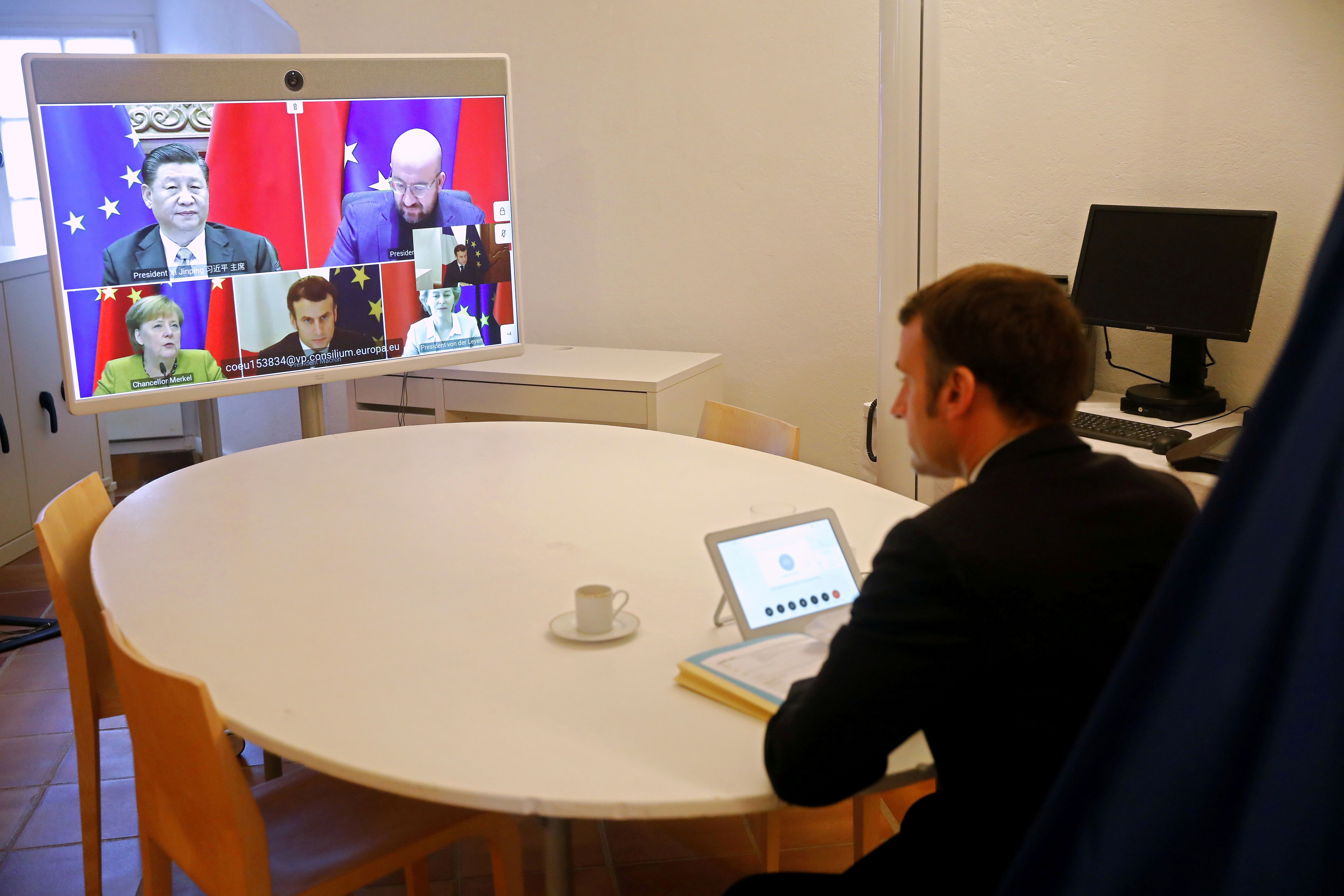Fake Success: The Conclusion of the EU-China Investment Agreement Negotiations

CAI negotiations started in 2013. In 2014, the inflow of Chinese foreign direct investment (FDI) to the EU exceeded the value of EU FDI in China. In 2016, the latter invested in the EU a record amount of more than €35 billion (compared to less than €8 billion from the EU in China). In 2018 (the latest complete year with data), the total value of EU FDI in China amounted to €175 billion, and Chinese FDI in the EU was €59 billion. Chinese companies were increasingly taking over important European technology companies, which caused controversy in the EU for security reasons. China, meanwhile, blocked the access of EU entities to a large part of the market and subsidised domestic companies, violating WTO rules. To accelerate the CAI negotiations, at a summit in April 2019 the EU and China agreed that the talks would be concluded by the end of 2020. However, in September last year, the president of the European Commission emphasised the lack of concessions from China. Finalising the talks became a priority for the German presidency of the EU Council (June-December 2020). Under pressure from Germany and in the face of new Chinese proposals, the European Commission decided on 30 December 2020 to finalise the negotiations. Signing and then ratification are required for its entry into force, which is not certain at present.
Economic Context
The entry into force of the CAI will not mean reciprocity in the situation of EU companies in China and Chinese companies in the EU. It was the Union’s main goal in the negotiations. The agreement preserves the freedom of operation of Chinese companies in the EU and significantly opens the Chinese market in some sectors, including financial, accompanied by limited liberalisation in others, for example, medical (applies to only a few cities) or telecommunications (a limit of 50% of shares for foreign entities in some services). The removal by CAI of the requirement for a joint venture in certain sectors (including the automotive industry) repeats what already was steadily being introduced in China since 2018. At the same time, the agreement still allows the application of existing regulations, such as the EU investment-screening mechanism or, under the pretext of national security, Chinese FDI blockades. CAI’s provisions on the abolition of China’s customary obligation of technology transfer or the reduction of subsidies (in services, but not in industry) are declarative. The agreement also does not solve the problem of existing Chinese legislation (e.g., the 2016 Cybersecurity Law), which oblige foreign companies to cooperate with the authorities on legal matters.
The key, however, is the lack of a comprehensive dispute resolution system in CAI. The agreement provides for the creation of a panel of arbitrators elected by both the EU and China for state-to-state dispute resolution. It is a political mechanism that assumes the goodwill of the parties, which, due to China's unfair economic and political practices to date, will not protect EU companies from arbitrary decisions by China. It is weaker than the current regulations in the bilateral investment agreements of EU Member States with China, which CAI would replace. The dispute resolution system, however, will be active only in two years at the earliest. By then, according to the agreement, negotiations of a separate detailed investment protection mechanism are to be completed.
Political Context
The end of the CAI negotiations at the end of 2020 weakens the EU’s political leverage in the rivalry with China. CAI does not contain binding commitments regarding sustainable development or labour law. China has merely pledged to “make efforts” to ratify the two Conventions on Forced Labour of the International Labour Organisation (ILO). This is not very credible considering, among others, China’s lack of ratification of the International Covenant on Civil and Political Rights despite signing it in 1998. The possibility that China will accept the ILO convention was denied by an adviser to the Chinese government after the conclusion of the negotiations. In concluding the CAI negotiations, the EU declined to take into consideration China’s recent actions against Member States, including disinformation campaigns and threats to impose sanctions on, for example, Sweden. In addition, China violated international law by adopting the Hong Kong National Security Law, under which the authorities threatened Danish politicians, among others, with prosecution. The EC is trying to present the CAI as an example of a common EU policy towards China. This is not confirmed given the objections of Poland or Italy, among others, regarding hastily ending the talks and their lack of transparency. Strong pressure from Germany and France, the largest EU investors in China, to conclude the talks before the end of 2020 also undermined the common nature of the negotiations.
Relations with the U.S.
Closing the CAI negotiations is beneficial for China because the decision to end them before Biden administration took power weakens transatlantic cooperation. The European Commission was aware of this but deemed the agreement crucial in the dialogue with China as an expression of EU “strategic autonomy”. In December 2020, Jake Sullivan, now President Joe Biden’s national security advisor, expressed his desire to talk with the EU on CAI, but this was only possible once the new administration officially took power. The EC did not extend the negotiations to take advantage of this offer, explaining that all decisions on the agreement belonged exclusively to the EU. The Commission also noted that there were no consultations with the EU before the conclusion of the so-called “phase-one” deal between the U.S. and China in January 2020. The EC emphasizes that CAI will not threaten the EU-U.S. dialogue on China initiated in October last year. It is also trying to neutralise the negative effects of the agreement, pointing out that they concern only part of the EU’s relations with China and the U.S. remains the EU’s most important partner in combating threats related to Chinese policy.
Prospects and Conclusions
The ratification of the CAI by the EU is uncertain. After signing the contract, its text will be submitted to the European Council for approval. This decision will be taken by a qualified majority, although the wide scope of the agreement may cause some countries (e.g., Poland, Italy) to demand unanimity. In addition to Germany, the adoption of CAI is supported by France, which has announced that it does not expect China to quickly ratify the ILO conventions. With the exclusion of the provisions on investment protection from CAI, the text will not have to be ratified by the parliaments of the EU countries. However, the approval of the European Parliament (EP) is obligatory, and most factions there oppose CAI. In January, the EP adopted by an overwhelming majority (597 out of 705 total MEPs) a resolution criticising the conclusion of the CAI negotiations as the EU’s resignation from influencing Chinese policy in Hong Kong. In December last year, the EP also adopted a resolution on the forced labour of Uyghurs in Chinese Xinjiang. The entire CAI ratification procedure is expected to last until 2022. The completion of the CAI negotiations will mean that in 2021 the EU will conduct milder policy towards China in order not to disturb the process of ratifying the agreement. Mainly declarative cooperation with the U.S. towards China can be expected. Improving relations with the EU, along with a possible deterioration in transatlantic relations and Biden’s policy focus on domestic affairs, will enable China to pressure the U.S. and the EU more effectively to pursue its own interests. The EU’s focus on cooperation rather than “systemic rivalry” was praised by Chinese Minister of Foreign Affairs Wang Yi. CAI may also limit the outflow of investments from China as part of the diversification of production of EU companies, supporting the expansion of China’s internal market in line with its new five-year plan.
By finalising the CAI at this point, the EU has pulled back its policy towards China to the period of cooperation prior to the adoption of the 2019 “systemic rivalry” strategy. The agreement is not a condition for the success of EU firms in China or a key element in improving the economic situation in Germany, for example. For companies, such as Volkswagen, the profits on the Chinese market (where increased access is one of the arguments for adopting CAI) are important, but not crucial compared to the EU or U.S. markets. Polish enterprises, linked in global production chains with European entities, may benefit from CAI, but this depends on China’s compliance with its obligations.
However, the political effects of the agreement will harm the interests of Poland and the EU to a greater extent. Acceptance of CAI by the EU may be viewed in China as a departure from the EU policy emphasising normative issues in relations and the perception of China as a threat to its interests. It may also undermine the credibility of EU policy in other areas in the world. In this context, the agreement is also a problem for Poland, which bases its foreign policy, among others, on the legality and importance of international law and EU-U.S. cooperation.


